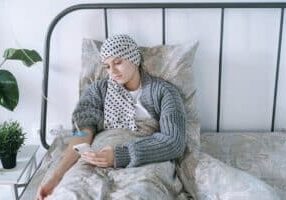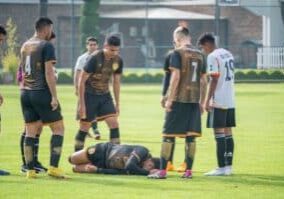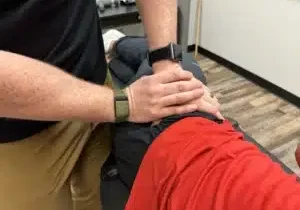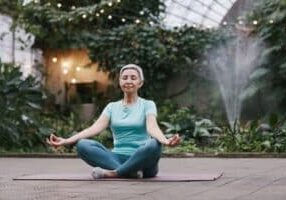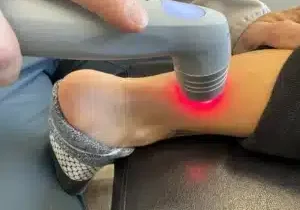Have you ever felt like you can hardly sit comfortably all day at work? Does it feel like your back muscles twist and freak out when you lift heavyweights? These triggers and more can translate to low back pain.
As we age, tendon elasticity and bone strength tend to decrease. The discs in our spine lose fluid and that lessens the ability to cushion the vertebrae. If the spine is overly compressed, these discs will rupture and bulge outward. That creates pressure on one of more than 50 nerves that control body movements and transmits signals to the brain. Disc strain can be a big cause of back pain.
Another cause of low back pain is from nerve irritation or bone lesions. It is also brought about by degenerative conditions such as arthritis, osteoporosis, viral infections, joints’ irritation or congenital abnormalities.
Lifestyle factors can create low back pain too. Too much weight gain, a non-healthy lifestyle, weight gain during pregnancy, poor physical stature, the wrong posture for various activities or sleeping in bad positions can all contribute to creating low back pain too.
Having bad posture is especially dangerous. Slouching is a common cause of low back pain. Aside from that, weak abdominal muscles can lead to a condition known as ‘swayback’. It is an abnormal curving of the spine where the discs between vertebrae become damaged. It may first appear as feeling stiff or numb when you get up and move around after sleeping or sitting.
As mentioned earlier, another cause of low back pain can be from lifting or carrying heavy things…especially when you are not warmed up or not used to doing such activity. When lifting heavy objects there is increased pressure on your lumbar spine. If done in a wrong manner, with the weight positioned too far in front of the spine, the muscles behind the back of the body exert extra effort to keep you upright. This can cause muscle tears or herniation.
This can be hard to overcome, especially if you’ve had multiple back injuries because scar tissue that’s created during recovery is not as sturdy and flexible as normal tissue. The scar tissue buildup from repeated injuries eventually grows, deteriorates the spinal stability and can lead to even more serious injuries.
If you are dealing with ongoing low back pain we can help. At Head 2 Toe, over 90% of our patients find lasting low back pain relief. We use a three-step process to stop the hurt, fix the cause, and provide you with a plan that will solve the real problem.
Many times, people will have questions about their specific conditions or situation that they’d like to discuss prior to coming in. Give our front desk team a call, tell us what’s happening and if you’d like, we can even get one of the doctors on to help you as well.
How Manual Therapy Can Be Your Key to Pain Alleviation and Overall Wellness
Discover the transformative power of manual therapy for pain alleviation and wellness in our blog ‘How Manual Therapy Can Be Your Key to Pain Alleviation and Overall Wellness’.
Read MoreThe Role of Chiropractic Care in Sports Injury Rehab: A Deep Dive
Explore the essential role of chiropractic care in sports injury rehab in our comprehensive blog ‘The Role of Chiropractic Care in Sports Injury Rehab: A Deep Dive’.
Read MoreHow Your Local Chiropractor Can Help You With Back and Neck Pain
Understanding back and neck pain Back and neck pain can be caused by poor posture, muscle strain, injury, or underlying health conditions. The pain may range from mild to severe and can affect your daily activities. Common symptoms include stiffness, muscle spasms, and limited range of motion. In some cases, the pain may radiate to…
Read MoreRehabilitation Services for Sports Injuries: A Comprehensive Guide
Understanding sports injuries and the need for rehabilitation services Injuries during sports are common and can affect athletes of all levels. Rehabilitation services play a crucial role in helping athletes recover from these injuries and get back to their peak performance. With the right guidance and treatment, athletes can regain strength, flexibility, and mobility, ultimately…
Read MoreUnderstanding Posture Therapy: Techniques and Benefits
What is posture therapy? Posture therapy involves exercises and techniques to improve your body alignment and position. It aims to correct postural imbalances and relieve pain and discomfort caused by poor posture. The therapy focuses on strengthening muscles and stretching tight areas to achieve proper alignment of the body. It can also include education on…
Read MoreThe Science Behind Foot Pain Therapy: Understanding the Basics
What causes foot pain? The most common cause of foot pain is wearing ill-fitting or unsupportive footwear. High heels and narrow toe boxes can put excessive pressure on the feet, leading to issues like bunions and corns. Flat feet or high arches can also contribute to foot pain because they affect the alignment and distribution…
Read More
